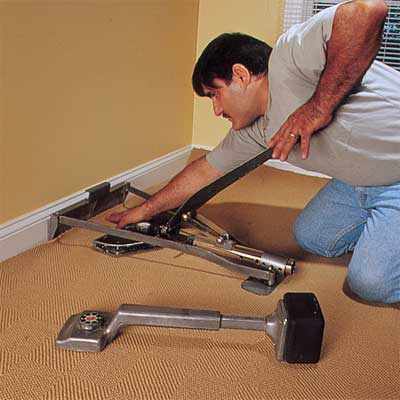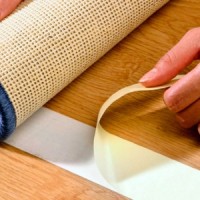Carpet laying: choice and methods
Carpet, as a soft and warm covering, is used in completely different rooms. It covers the entire floor in the room, creating a lasting sense of coziness and comfort.
Such a coating is suitable for any interior, because everyone can choose an option suitable for themselves in style, quality and price.
From this article you will learn some of the features of carpet, recommendations for its selection, methods of installation and maintenance.
Which carpet to choose for installation
Latex pad, backing and pile - these are the composition of any carpet.
The pile can be artificial or natural - the price of the product depends on it.
Synthetic carpet is usually made from polyamide, polyester, polyacrylic or polypropylene. What is good about synthetics is its durability.
Natural woolen carpet , in turn, will cost more, be warmer and more environmentally friendly, but will last less.
To check what kind of material in front of you there is a simple way - a piece of material can be set on fire. There are usually test pieces in stores for these checks. Natural yarn will smolder on fire, and synthetics will simply melt.
Also, the material is divided depending on the type of production:
• Needle-punched. Maximum wear resistance. The threads are laid on a warp and driven in with needles. It is lint free and suitable for high traffic areas.
• Woven. It is difficult to manufacture and takes longer to manufacture. The technology is borrowed from the Persian carpet makers who use Jute to make. The result is excellent quality from natural material, however, the price is appropriate.
• Tufted carpet. For manufacturing, needle-stitching technology is used: a needle with a pile thread passed through the base, leaving loops on the front side. They will become the pile of the future carpet.
Carpet laying methods
The final result depends on the correct installation technology, so you should pay special attention to this. You need to choose the right materials, glue, use the right technique, or hire specialists who will do it quickly and efficiently.
So, about the ways of laying carpet :
➦ Loose laying with all-round fixation
This option is suitable for small rooms, living quarters, which allow you to spread one continuous sheet of material. This method is quick and easy.
There are restrictions: it cannot be washed with a washing vacuum cleaner and heavy furniture can not be placed on top - this will shorten the service life. For installation, you just need to put the material on the floor with an allowance of 3-4 cm into the wall and walk over it with a roller, securing it with a plinth. Near the doorway, you can fix the canvas with a metal rail.
➦ Similar option: loose-fitting with fixation on double-sided tape
For this method, suitable for different rooms, the carpet is fixed to the floor with double-sided tape and adhesive tape (tape height up to 150 mm). It is important to prepare the floor surface before attaching the adhesive. It is worth laying the canvas only on laminate, linoleum, parquet or porcelain stoneware.
➦ Direct bonding

This coating is fixed with a special glue. Suitable for rooms and halls in which frequent changes of furnishings and rearrangements of furniture are not planned, since dismantling will be laborious. In this case, the method of fixing is very reliable and the movement of furniture, the high permeability of people and cleaning equipment are not terrible here.
➦ Double-sided gluing
Here, the carpet must be laid on the substrate. It allows you to significantly increase sound and heat insulation, make the carpet as elastic and shock-absorbing as possible. However, the method will not work if you plan to install a warm floor.
➦ Stretching
This is glueless styling that requires specialized tools: grippers, stretchers and staplers. Not suitable for rooms over 5 meters wide. This method is used only by professionals, but it is he who is one of the most reliable. Dismantling is quick and easy.
Important to remember! It is strongly discouraged to walk or install furniture on a fresh carpet for the next 24 hours after the completion of the work!
